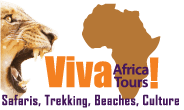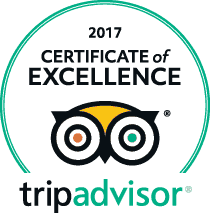Climbing Kilimanjaro: 5 Tips for Staying Safe
Climbing to the top of Mount Kilimanjaro is both a thrilling and rewarding experience that offers offers spectacular views and a great sense of achievement. However, high altitudes have some physical and health challenges and it is important to take precautions.
Here are some tips we gathered for you:
1. Bring the right equipment:
Wear comfortable clothing. Choose well-fitting shoes that provide ankle support, stability and grip. Carry gear for all types of weather in your backpack since it can change to both extremes. Pack rain- and windproof outerwear made of lightweight material, a hat and sunglasses. Wear sunscreen for protection from strong sun rays. Use walking poles to walk on the rocky areas for better balance and to reduce physical impact off your knees, hips, ankles, and lower back.Make sure you stay hydrated all through, because sweating is generally more in higher altitudes.

2. Prevent altitude-related sickness:
Acute mountain or altitude sickness is the most common illness in high altitudes. Symptoms may include:
- Nausea
- Headache
- Fatigue
- Dizziness
- Drowsiness
- Insomnia
Some other altitude-related disorders include:
- High-altitude pulmonary edema (HAPE)
- High-altitude cerebral edema (HACE)
- Peripheral edema, which causes your hands, feet, and face to swell
- Altitude throat
- Altitude bronchitis
3. Acclimatization:
4. Medication:
Medication can help you to take in more oxygen and to acclimatize better to the high altitude. The best thing to do is to visit a doctor or a pharmacy to get some advice on the best medications for altitude sickness. These medications will also help to improve the quality of your sleep and breathing.
5. Descent:
Upon noticing any altitude-related illness, it is advisable to descend immediately. Try to descend by 3,000 feet or more.



I’m travelling from Spain and planning to climb Mount Kilimanjaro in march is it a good time? and do I need any pre-approval and any particular documents I need to carry?
Hello
We will be sending you an e-mail with all requirements
Yes, it is good time to travel and we will be happy organizing your trekk!
There is no specific pre approval needed, unless you have some medical/health issues/records. Then you should have your doctors approval for this trip.
Particular documents are a travel insurance, which covers evacuation up to 6.000m! This is very important.
If you plan joining a group, in March we have the following groups to join:
03.03.2020 9 days Northern Circuit
05.03.0202 7 Days Machame Route
07.03.2020 7 Days Lemosho Route
08.03.2020 8 Days Lemosho Route
Please note that the date is the STARTING DAY OF THE TREK! So you need to arrive one day earlier, than listed above. Also the number of days means, the days you spend on the mountain.